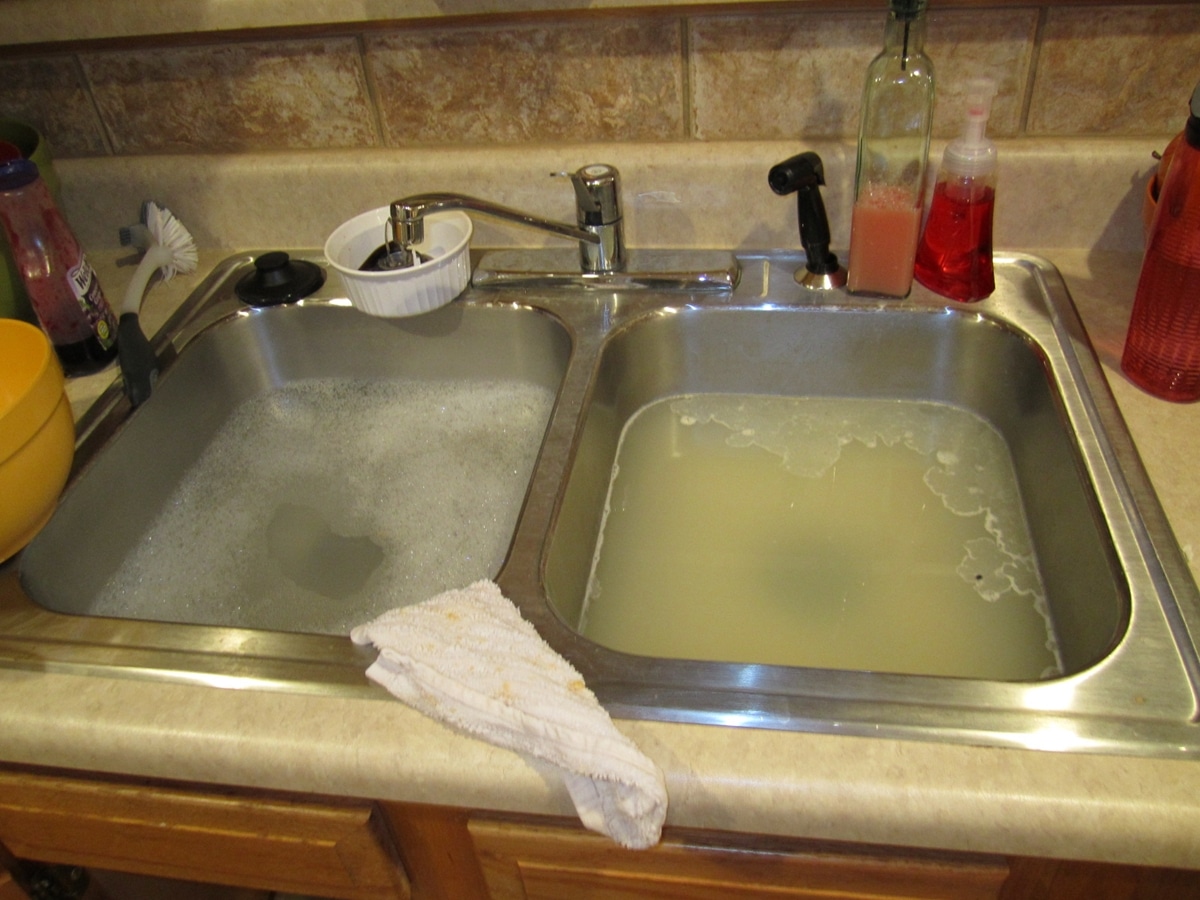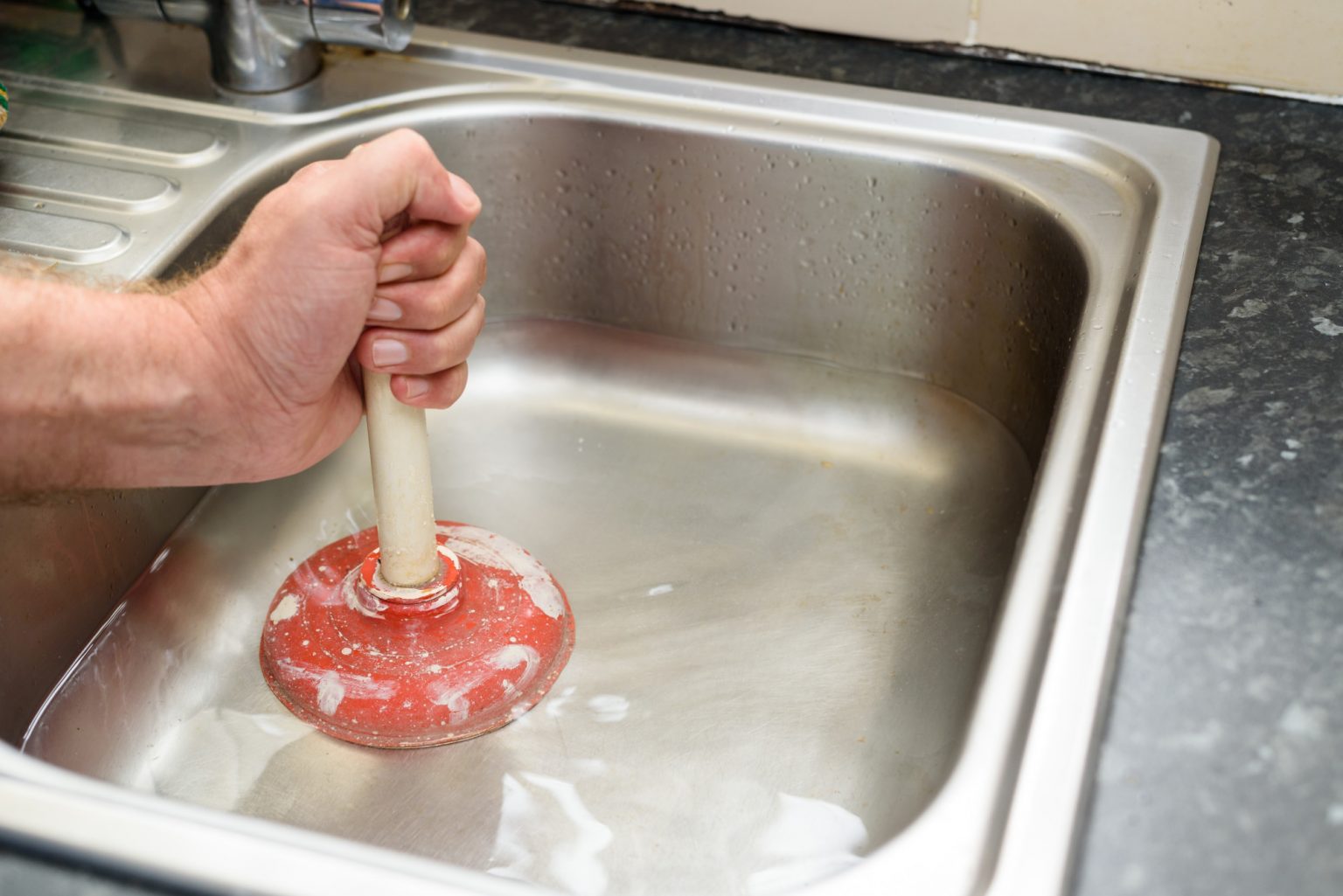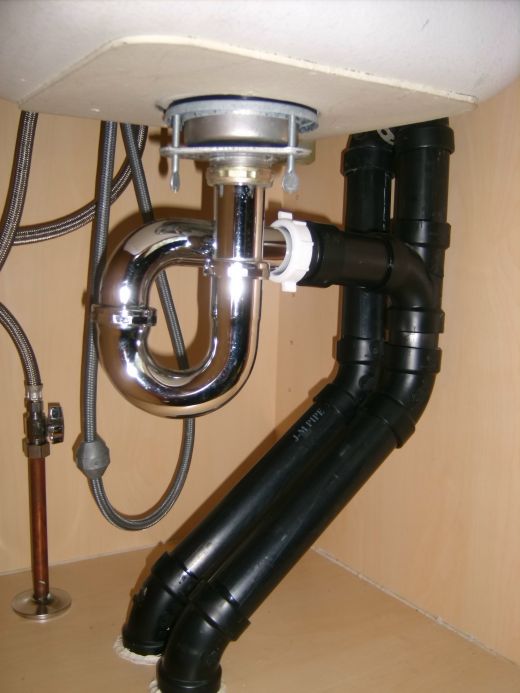If you're experiencing issues with your kitchen sink draining slowly or backing up, the problem might not be with the sink itself, but rather with the vent pipe. The vent pipe is a vital component of your kitchen plumbing system, as it allows air to flow into the pipes and prevents suction from forming, which can cause water to drain slowly or not at all. So, if you're noticing problems with your kitchen sink, it's important to address any issues with the vent pipe. Here's how to fix a kitchen sink vent pipe to ensure your sink drains properly.How to Fix a Kitchen Sink Vent Pipe
If you notice that your kitchen sink is draining slowly or not draining at all, it could be a sign of a clogged vent. Over time, debris such as food particles, grease, and even small objects can get stuck in the vent pipe, blocking the flow of air and causing problems with the sink draining. To unclog a kitchen sink vent, you can try using a plumber's snake or a high-pressure water jet to remove any blockages. If these methods don't work, it's best to call a professional plumber to properly clear the vent and prevent any further issues.How to Unclog a Kitchen Sink Vent
While the kitchen sink vent may seem like a simple component of your plumbing system, it can encounter several common problems that can impact the functionality of your sink. Some of these issues include clogs, leaks, and improper installation. Clogs can occur due to debris buildup, while leaks can happen from cracks or damage in the vent pipe. Improper installation can also cause issues, such as the vent pipe not being the correct size or not being connected properly to the sink. Knowing these common problems can help you identify and address any issues with your kitchen sink vent.Common Kitchen Sink Vent Problems
There are a few telltale signs that your kitchen sink vent may be clogged. These include slow draining or water backing up in the sink, gurgling sounds coming from the sink when water is draining, and foul odors coming from the sink. If you notice any of these signs, it's important to address the issue as soon as possible to prevent further damage and potential health hazards from the buildup of bacteria and mold.Signs of a Clogged Kitchen Sink Vent
If you're installing a new kitchen sink or replacing an old one, it's important to also install a vent pipe to ensure proper drainage. The process of installing a kitchen sink vent involves cutting a hole in the wall or floor behind the sink and connecting the vent pipe to the sink drain and the main plumbing stack. It's important to make sure the vent pipe is the correct size and properly installed to avoid any future issues.How to Install a Kitchen Sink Vent
A leaking kitchen sink vent can be a frustrating and messy problem to deal with. The most common cause of a leaking vent pipe is damage or wear and tear over time. Cracks or holes can form in the pipe, which can cause water to leak out and potentially damage surrounding walls or floors. To fix a leaking kitchen sink vent, it's important to identify the source of the leak and either repair or replace the damaged section of pipe.Why is My Kitchen Sink Vent Leaking?
To prevent clogs and other issues with your kitchen sink vent, it's important to regularly clean it. This can be done by using a plumber's snake or a high-pressure water jet to remove any debris or buildup in the vent pipe. You can also use a mixture of baking soda and vinegar to help break down any grease or grime. Regularly cleaning your kitchen sink vent can help maintain proper drainage and prevent any potential issues from arising.How to Clean a Kitchen Sink Vent
If you're experiencing problems with your kitchen sink vent, there are a few troubleshooting steps you can take to try and resolve the issue. These include checking for clogs, leaks, and proper installation. If you're unable to identify or fix the problem on your own, it's best to call a professional plumber who can properly diagnose and address any issues with your kitchen sink vent.Troubleshooting Kitchen Sink Vent Issues
If your kitchen sink vent is damaged beyond repair, it will need to be replaced. This can be a complex process, as it involves cutting into walls or floors and properly connecting the new vent pipe to the sink drain and main plumbing stack. It's important to have a professional plumber handle the replacement to ensure it is done correctly and to avoid any further issues with your kitchen sink vent.How to Replace a Kitchen Sink Vent
The best way to avoid any issues with your kitchen sink vent is to take preventative measures. This includes regularly cleaning the vent, avoiding pouring grease or food scraps down the sink, and ensuring the vent pipe is properly installed and connected. It's also important to address any problems with the vent pipe as soon as they arise, as they can lead to more serious issues if left untreated.Preventing Kitchen Sink Vent Problems
The Importance of Proper Ventilation for Your Kitchen Sink
What is a Kitchen Sink Vent?
 A kitchen sink vent, also known as a drain vent, is a vital component of your plumbing system. It is a small pipe that runs from your sink drain to the roof of your house. Its main function is to release the built-up air pressure in the plumbing system, allowing the kitchen sink to drain properly.
A kitchen sink vent, also known as a drain vent, is a vital component of your plumbing system. It is a small pipe that runs from your sink drain to the roof of your house. Its main function is to release the built-up air pressure in the plumbing system, allowing the kitchen sink to drain properly.
Why is Proper Ventilation Important?
 Proper ventilation for your kitchen sink is crucial for several reasons. First and foremost, it prevents foul odors from permeating your kitchen. Without a vent, the air trapped in your plumbing system can create a vacuum that sucks out the water in your sink's P-trap, causing unpleasant smells to seep out. A vent also ensures that water flows smoothly down the drain, preventing clogs and backups. Furthermore, a well-ventilated kitchen sink helps maintain the overall health of your plumbing system, preventing costly repairs in the future.
Proper ventilation for your kitchen sink is crucial for several reasons. First and foremost, it prevents foul odors from permeating your kitchen. Without a vent, the air trapped in your plumbing system can create a vacuum that sucks out the water in your sink's P-trap, causing unpleasant smells to seep out. A vent also ensures that water flows smoothly down the drain, preventing clogs and backups. Furthermore, a well-ventilated kitchen sink helps maintain the overall health of your plumbing system, preventing costly repairs in the future.
Signs of Vent Issues
 Now that we understand the importance of a kitchen sink vent, it is essential to know the signs of vent issues. One of the most common signs is slow draining or gurgling sounds coming from your sink. This indicates that there is a blockage in the vent, hindering the proper flow of air and water. Another sign is foul odors emanating from your sink, as mentioned earlier. If you notice these signs, it is crucial to address them immediately to avoid further damage to your plumbing system.
Now that we understand the importance of a kitchen sink vent, it is essential to know the signs of vent issues. One of the most common signs is slow draining or gurgling sounds coming from your sink. This indicates that there is a blockage in the vent, hindering the proper flow of air and water. Another sign is foul odors emanating from your sink, as mentioned earlier. If you notice these signs, it is crucial to address them immediately to avoid further damage to your plumbing system.
How to Fix Vent Issues
 Fixing vent issues for your kitchen sink may sound daunting, but it is a relatively simple task that can be done by a professional plumber. The first step is to locate the vent pipe on your roof and check for any blockages or damage. If the issue is a blockage, it can usually be cleared using a plumbing snake or high-pressure water. A damaged vent pipe may require a replacement, which is best left to a professional for safety reasons.
Fixing vent issues for your kitchen sink may sound daunting, but it is a relatively simple task that can be done by a professional plumber. The first step is to locate the vent pipe on your roof and check for any blockages or damage. If the issue is a blockage, it can usually be cleared using a plumbing snake or high-pressure water. A damaged vent pipe may require a replacement, which is best left to a professional for safety reasons.
In Conclusion
 In summary, proper ventilation for your kitchen sink is crucial for maintaining a healthy and functional plumbing system. If you notice any signs of vent issues, it is best to address them promptly to avoid further complications. Remember to regularly clean and maintain your vent to ensure it continues to function properly. With proper ventilation, your kitchen sink will not only look great but also smell great and work efficiently.
In summary, proper ventilation for your kitchen sink is crucial for maintaining a healthy and functional plumbing system. If you notice any signs of vent issues, it is best to address them promptly to avoid further complications. Remember to regularly clean and maintain your vent to ensure it continues to function properly. With proper ventilation, your kitchen sink will not only look great but also smell great and work efficiently.







/sink-vent-installing-an-auto-vent-2718828-05-ca0dcb2915be457b9693ccd2655e6c21.jpg)







/how-to-unclog-a-kitchen-sink-2718799_sketch_FINAL-8c5caa805a69493ab22dfb537c72a1b7.png)
































































:max_bytes(150000):strip_icc()/sink-vent-installing-an-auto-vent-2718828-03-7d2c3b9c51024155a1ea47f7ae35cadd.jpg)

















